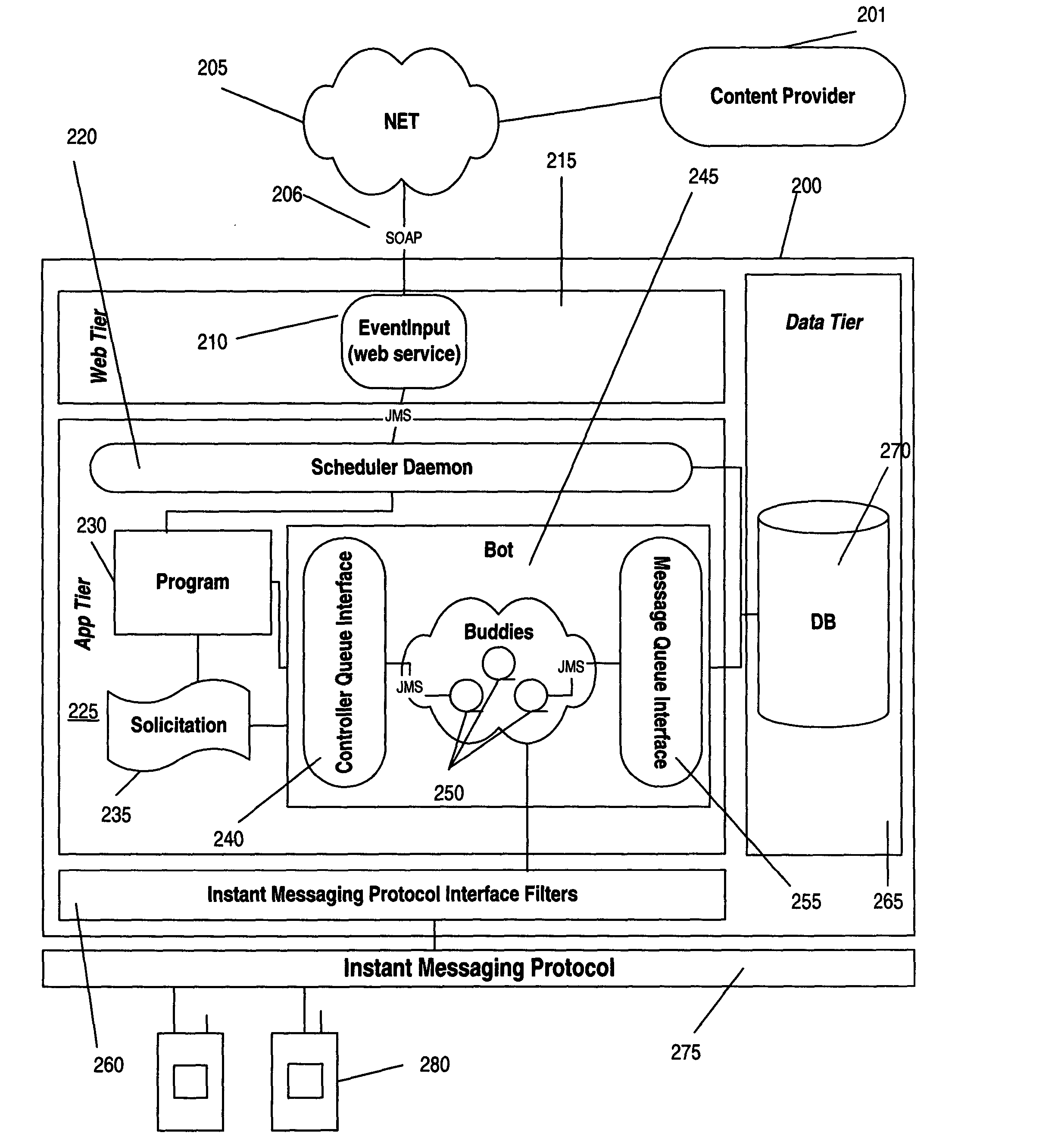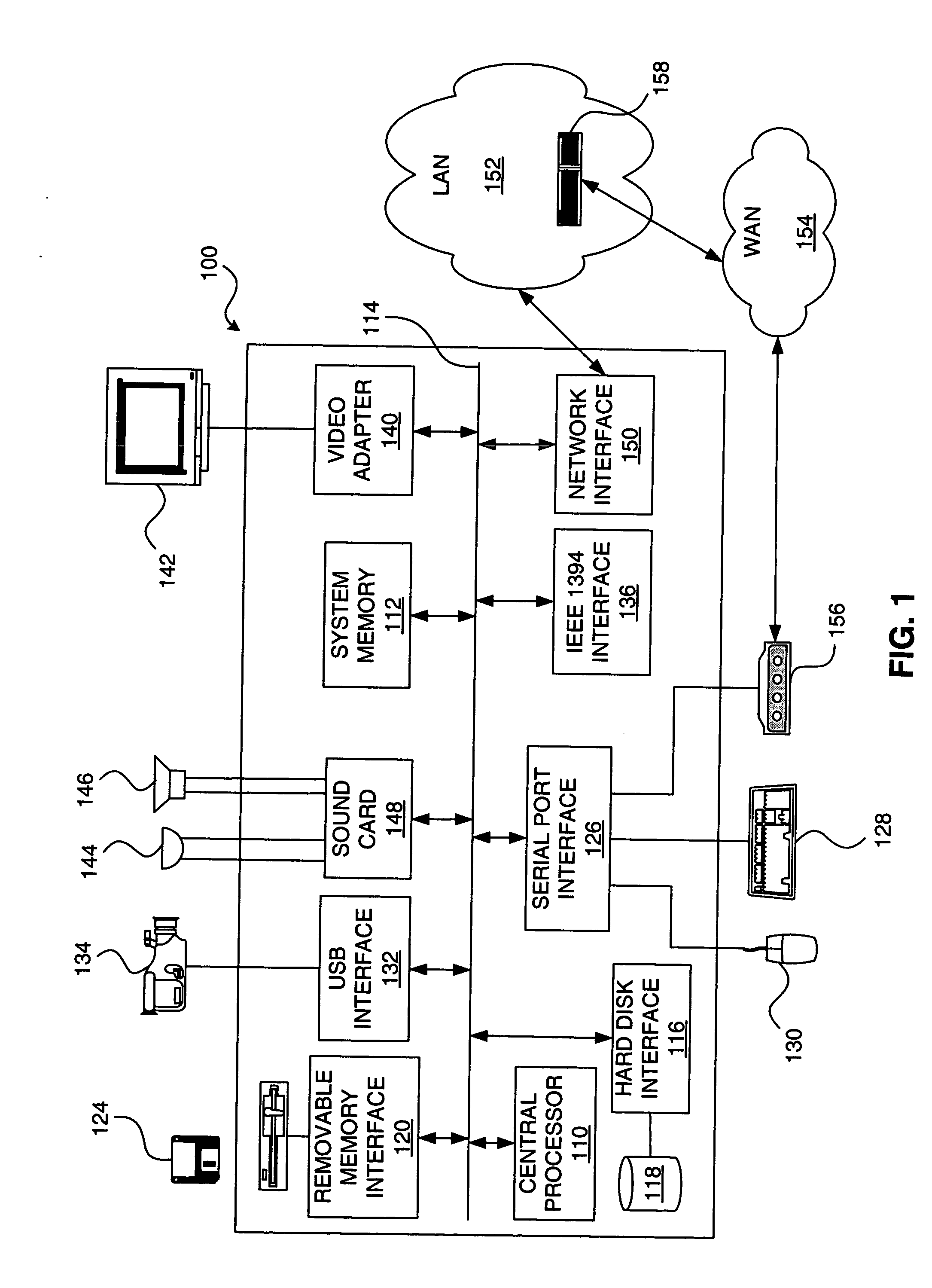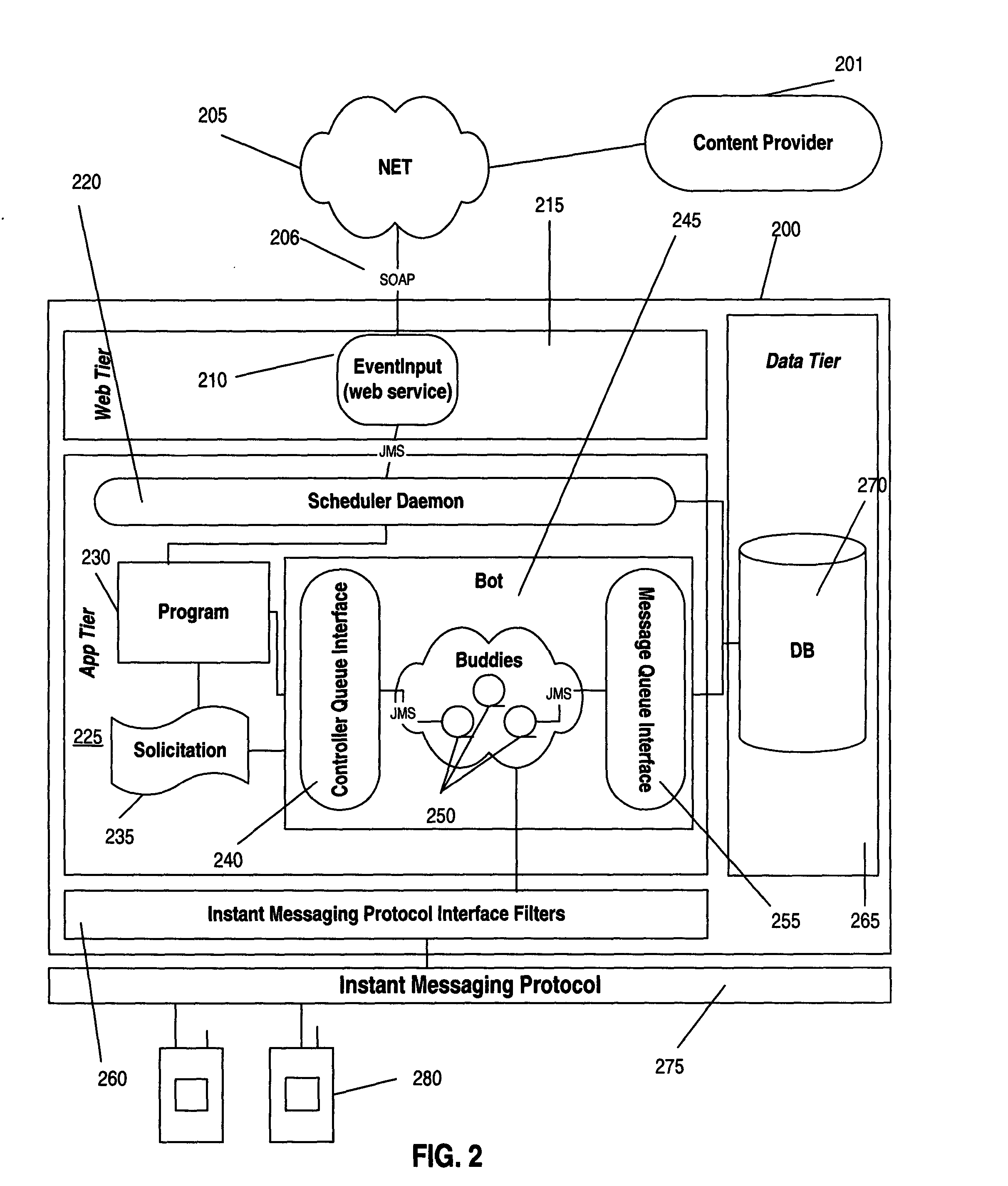Scalable instant messaging architecture
a technology of instant messaging and instant messaging bots, applied in the field of communication through instant messaging technology, can solve the problems of inability of instant messaging architecture to adapt the response or performance of a bot for one user based on the interaction of the bot with another user, and inability of automated instant messaging bots to build an interactive community, etc., to achieve significant portability and maintain a community presence and atmospher
- Summary
- Abstract
- Description
- Claims
- Application Information
AI Technical Summary
Benefits of technology
Problems solved by technology
Method used
Image
Examples
Embodiment Construction
[0023] The invention and the embodiments of the invention described herein provide a significant improvement over current messaging technology in building an adaptive online community. Each figure illustrates an aspect of the invention in a plurality of embodiments. Various embodiments of the invention provide high flexibility and inherent portability and therefore are not restricted by programming language, platform or electronic device. Aspects of the invention further make use of scalable interfaces to exceed the limitations of current scalability boundaries providing a richer community-motivated instant messaging experience.
[0024] One or more aspects of the invention may be embodied in one or more computers and computer systems, such as is illustrated in FIG. 1. In FIG. 1, computer 100 includes a central processor 110, a system memory 112 and a system bus 114 that couples various system components including the system memory 112 to the central processor unit 110. System bus 114...
PUM
 Login to View More
Login to View More Abstract
Description
Claims
Application Information
 Login to View More
Login to View More - R&D
- Intellectual Property
- Life Sciences
- Materials
- Tech Scout
- Unparalleled Data Quality
- Higher Quality Content
- 60% Fewer Hallucinations
Browse by: Latest US Patents, China's latest patents, Technical Efficacy Thesaurus, Application Domain, Technology Topic, Popular Technical Reports.
© 2025 PatSnap. All rights reserved.Legal|Privacy policy|Modern Slavery Act Transparency Statement|Sitemap|About US| Contact US: help@patsnap.com



